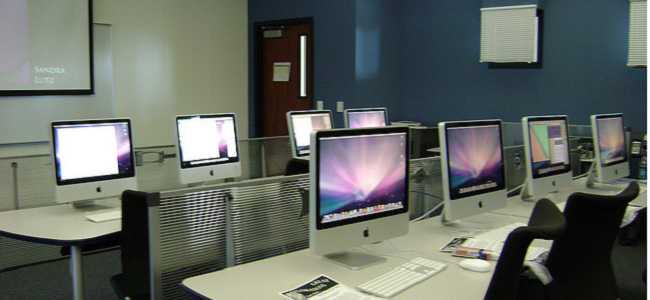In turn, this success will impact positively on learning. This learning is not restricted solely to those subjects pupils study for their public examinations. Education, nowadays, is no longer restricted to what happens within the four walls of the classroom, and a good school will guide colleagues in enabling pupil learning and knowledge acquisition outside the classroom.
The ten steps for digitally-enhancing your school
1. E-safety
A responsible school will be teaching their pupils how to use technology responsibly. A high priority will be given to training in e-safety, and this will be clearly visible through posters, lessons, plans and actions. E-safety is a lifelong skill.
2. Substitution to Redefinition
A school that is embracing technology will be looking to redefine what is happening in the classroom. There is no app or technological tool that will substitute for a teacher. Schools will be enhancing the learning via technology use. For example, pupils will complete activities that were previously inconceivable without the use of technology. A report on earthquakes will no longer be a dryly-written commentary, but instead will come from the heart of the earthquake itself using green screens and an appropriate video. Pupils will be able to talk directly to earthquake specialists via Skype linkups, and the impact on the learning and understanding will be transformed.
3. Differentiation
Different modalities of learning will be considered and accounted for via technology in a way that could not be imagined 20 years ago. Pupils will, for example, make use of mobile technology to record their answers, annotate pictures or film their work.
4. Flipped Classroom
This will be central to how learning can be transformed. Via screencasts, powerpoints and online video resources, students will access information at their own pace, leaving time in class for teachers to deal with any problems that have arisen during the learning completed outside of class.
5. Assessment for Learning
An enormous variety of tools are available to assist in this area. At the touch of a button, teachers will assess the learning that has taken place and ensure that progress is made at the appropriate pace. An online record will be kept that gives an instant picture of how pupils have progressed.
Technology will be used to capture an image of a pupil’s work, which will then be shared with a class or a small group who will explore the work formatively. This is peer assessment in the 21st Century, and learners will be more engaged as active resources for each other and collaboration will be that much more effective using blogs or wikis.
6. Feedback
Research suggests that immediate feedback can be much more advantageous to the pupils and enables progress. Using google forms or an educational social network site such as Edmodo, work can be assigned, completed and then returned for immediate feedback. In addition feedback can be given using voice annotation and clear detailed explanation which can be watched and listened to again and again.
7. Bringing walls to life:
Displays in classrooms will continue to recognise pupils’ work but greater use will be made of plasma screens, word clouds, qr codes which links to videos or pupils’ oral work, aurasma will bring pictures alive. Displays will more effectively kick start conversations, enable deeper learning and bring learning alive.
8. Teacher training
Technology is everywhere, but it needs to be embraced and harnessed contextually so that it enhances the learning experience. Technology must not become another expense on school budgets that remains untouched and unused. A programme of training will be in place to ensure that teachers are able to make the most of digital technology to enable greater pupil progress.
9. Digital Leaders
Schools will make the most of their pupils' greater ability to understand technology and to get to grips with it more quickly than staff. Pupils will be given positions of responsibility to teach other pupils and staff how certain tools work. Schools will be giving their pupils an opportunity to become masters in technological tools and more importantly they will be showing the pupils how to help others develop their skills too. They will be teaching pupils how to be leaders.
10. Lifelong learning
It is said that in the future jobs will change every five to ten years, and we need to equip pupils to be ready for this by giving them the skills to become independent lifelong learners. How they access information to enable them to become experts in a variety of fields in their future is part of the education we must give them, and good teaching techniques enhanced by technology have an important part to play in this.
How do you embrace the future in your school? Let us know in the comments.


















